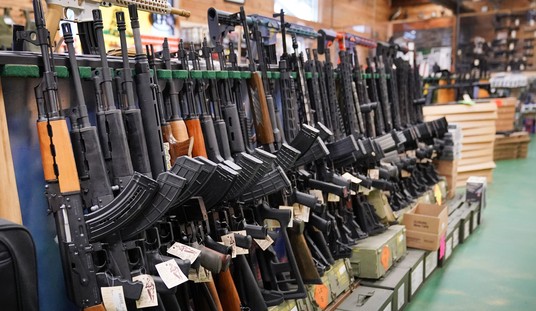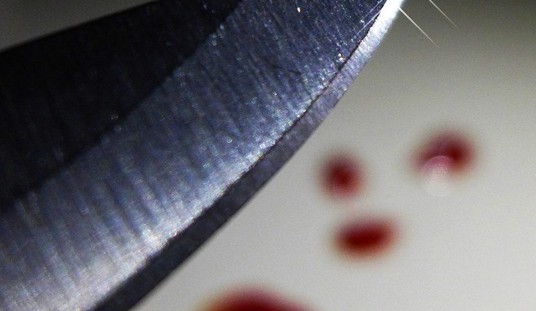The United States has roughly 7,000 miles of land border, and since 1924 the men and women of the Border Patrol have had the difficult, often lonely, and sometimes deadly duty of monitoring and patrolling those long and mostly sparsely-settled stretches. Officially, the United States Border Patrol is the mobile, uniformed law enforcement arm of U.S. Customs and Border Protection (CBP) within the Department of Homeland Security (DHS).
Advertisement
The Border Patrol’s 20,000-plus agents have a single mission: securing our borders. Within that mission however are a wide variety of duties and potential encounters, ranging from interdicting those who are seeking illegal entry to the U.S., to locating and arresting smugglers, to preventing terrorist infiltration. Increasingly, these encounters involve individuals and groups who are willing and able not just to shoot back, but to shoot first to avoid arrest and accomplish their objectives. Since 1990, the average annual number of Border Patrol agents killed in the line of duty has doubled. To address this growing threat, as with other law enforcement agencies, the Border Patrol has significantly expanded the variety of weapons available to its personnel.
Before the advent of drug cartels and smuggling rings with high-tech communications gear, night-vision equipment and full-auto weapons, the border patrolman’s primary armament was a revolver. Notable among the ranks of the Border Patrol was Bill Jordan, an Assistant Chief Patrol Inspector who became justly famed both with his fellow agents and the public at large as a record-setting expert with the revolver — the weapon on which he relied day in and day out. Jordan also won lasting recognition for persuading Smith & Wesson to develop its widely-acclaimed Model 19: a mid-frame .357 revolver adopted in the tens of thousands by law enforcement officers nationwide.
Advertisement
Times change however, and with them the guns and methods of border-hopping criminals have changed as well. Nowadays, the equipment and training of the Border Patrol are among the most modern to be found, and their firearms selections have been driven both by the arms choices of their numerous adversaries, and the rugged conditions and desolate terrain in which they operate. The sidearm is still the basic armament of Border Patrol agents, but it’s no longer a revolver. Today’s border patrolman typically carries a Heckler & Koch P 2000 in .40 caliber. Carrying over twice the number of rounds as a revolver, this 13-round (12+1) polymer-frame double action only automatic has proven itself popular with the law enforcement agencies that have adopted it, and established a reputation for reliability in even the harshest operating environments.
As with many other organized criminal enterprises, the gangs and other violent criminals that attempt to penetrate our borders have become far more sophisticated in their weapons choices. The substantial profits from human and drug smuggling in particular, and the easy availability of top-of-the-line military small arms in lawless parts of the world have allowed these black-market operators to assemble formidable arsenals, and they have increasingly proven themselves ruthless with their use. Because of the wide variety of adversaries, circumstances and terrain faced by Border Patrol agents, their weapons choices have been tailored to meet a growing variety of tactical considerations, and an expanding threat environment. While every agent’s indispensable daily companion is still the sidearm, sometimes it’s not enough gun and a more powerful alternative is required.
Advertisement
As any street cop will tell you, the shotgun has long been a welcome force multiplier, and it’s psychological and physical effects have made it an essential part of every law enforcement armory. Bill Jordan called it “the great tranquilizer”, and it was a favorite of another well-renowned Border Patrolman. Col. Charles Askins, Chief Firearms Instructor for the Border Patrol in the 1930’s and, like Jordan, an expert pistolero in his own right, found the shotgun indispensable. On those not-infrequent occasions when Col. Askins and his fellow agents found themselves outmanned and outgunned, he relied on a twelve gauge scattergun to even the odds. Askins knew that a load of 00 pellets, which he called “blue whistlers”, would take the fight out of an adversary, and often send the downed criminal’s companions fleeing. To this day, the shotgun remains an important piece of Border Patrol armament. In years past, Border Patrol shotguns were mostly off-the-shelf, but today’s agents are supplied with purpose-built Remington 870s modified by Wilson Combat. These twelve gauge pump guns have cylinder-bore barrels in either 14” or 18” lengths, extended magazines, and Sidesaddle™ shell carriers. They sport tactical slings and ghost ring rear sights, and have tough finishes, inside and out, that can take the worst that the outdoor elements have to offer. They pack the same punch as their predecessors, but they pack more of it and can deliver it with greater accuracy and reliability, all of which are virtues that are vital when the chips are down.
Advertisement
Many of the encounters that require a Border Patrol Agent to use a firearm can be successfully concluded with a pistol or shotgun, but there are some tactical situations for which a rifle is the only solution. Medium and long range engagements, and engagements involving hostile actors intermingled with non-combatants call for the accuracy and sufficient terminal energy that only a rifle can deliver. In addition, being able to engage from a distance at which the target cannot see the agent who is covering him provides a critical tactical advantage in certain situations. As with many other law enforcement agencies, the Border Patrol’s mainstay rifle is the Colt M4. A time-tested design evolved from the M16, its operating system has been refined and improved over more than four decades of combat experience. Its manual of arms is relatively easy to learn, it’s lightweight, and the multi-position stock can accommodate a variety of shooters.
The M4, however, is not the only long arm in Border Patrol armories, and this brings us to a specialized unit within the Border Patrol. BORTAC, the Border Patrol Tactical Unit, was formed in 1984. Currently, its mission is worldwide counterterrorism; however, that was not always the case. Born in the crucible of the cocaine wars of the 1980s, BORTAC worked extensively both on its own and with the DEA to wipe out drug crops, destroy drug labs, and disrupt and interdict smuggling and distribution operations. BORTAC members have operated in twenty eight countries, and currently serve in Iraq and elsewhere. Their missions have included international training and advisory functions, high-risk warrant service, dignitary protection, and tactical training to other U.S. agencies and military units.
Advertisement
Specialized operations require specialized equipment, and BORTAC has some of the best. In addition to the Colt M4, the BORTAC armory has other rifles chambered in 5.56 including the M16A2 and the Heckler & Koch 53 in both the A2 (fixed stock) and A3 (collapsible stock) variants. Like the M16 / M4, the H&K 53 has a long, combat-proven lineage. It uses a unique roller-locked action in which twin vertical cylindrical “rollers” lock the bolt-carrier in place. After a round is fired, and chamber pressure drops to a safe level, the rollers disengage and allow the bolt carrier to cycle rearward, pushed by the remaining recoil impulse. This system was developed in Germany during WWII, and was introduced in the Sturmgewehr 44, which is generally recognized as the first successful assault rifle.
For specialized and high-intensity engagements, BORTAC has 40mm grenade launchers (the venerable M79 and the M203) and submachine guns. The M79 is a single shot shoulder-fired weapon, nicknamed “Thumper”, that gained fame in Viet Nam. The M203 is also a single shot launcher, but is designed to be attached under the barrel of an M16. Both launchers can fire a variety of rounds, including high explosive, smoke, CS and buckshot. For tactical situations requiring the use of a submachine gun, BORTAC has chosen the Heckler & Koch UMP in .40 caliber. This weapon has an 8” barrel, and fires from a closed bolt. Like many newer pistols it also makes extensive use of polymer components, resulting in an empty weight of just under five pounds. To enhance control during full auto firing, the cyclic rate has been limited to 650 rounds per minute.
Advertisement
At the other end of the spectrum, for precision long distance shooting, the tried-and-true Remington 700 short action in 7.62 X 51 (.308 Winchester) is BORTAC’s rifle of choice. This Mauser-inspired bolt action rifle was introduced in 1962, and has a wide following with civilian shooters, and law enforcement and military snipers. In choosing the Model 700, BORTAC is in good company; the Model 700 has also been the Marine Corps’ sniper rifle platform for over forty years. In Viet Nam, Kuwait, Iraq and elsewhere, the 700 has proved itself in the field, under the worst of conditions, for four decades.
From illegal immigrants to terrorists, and every kind of criminal in between, the Border Patrol Agents and Inspectors see it all. As they should be, the men and women who go in harms way to protect our borders and secure our nation are armed with some of the very best hardware available.








Join the conversation as a VIP Member